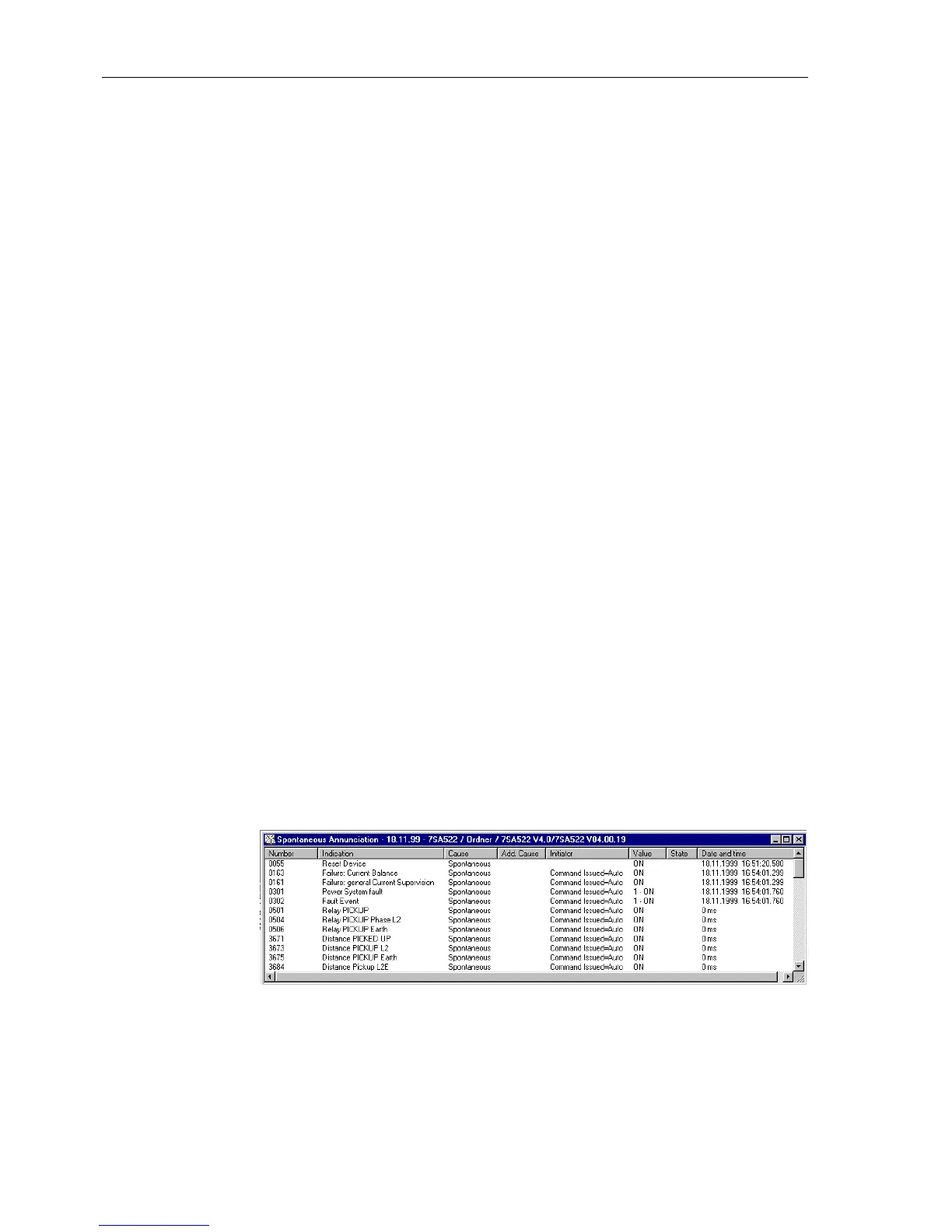Control During Operation
7-12 7SA6 Manual
C53000-G1176-C156-2
From PC with
DIGSI
®
4
When operating with DIGSI
®
4, the device messages can be saved on the hard drive
of a personal computer before they are erased from the device. To do this, follow ex-
actly the same steps taken to retrieve the messages. Instead of double clicking on the
message group in the message list to open the group, select the option
File → Save
in the DIGSI
®
4 window menu bar. DIGSI
®
4 then automatically creates a directory for
the messages — if one does not exist — and saves the message group in this direc-
tory. For details, see the “DIGSI
®
4 Device Operation” Handbook, order no. E50417–
H1176–C097, Section 9.4.
When all of the desired message groups have been saved on the PC, they can be
erased from the device as described above.
Of course, you can erase the saved data from the hard drive of your PC as every file.
7.1.1.6 General Interrogation
From PC with
DIGSI
®
4
The present condition of a SIPROTEC
®
device can examined by using DIGSI
®
4to
view the contents of the “General Interrogation” annunciation.
The messages are found by double-clicking on
Annunciation (see Figure 7-2),
double-clicking on
General Interrogation, and double-clicking on the date and
time that appear in the right window. All of the messages that are defined for a general
interrogation are shown along with the actual values and states.
7.1.1.7 Spontaneous Messages
From PC with
DIGSI
®
4
The spontaneous messages that can be displayed via DIGSI
®
4 are refreshed imme-
diately.
Find the message groups by clicking on
Annunciation (Figure 7-2).
Double click
Spontaneous Annunciation inthedatawindow.Thedateandtimeap-
pear in the data window. By double clicking on them, the Spontaneous Annunciation
window opens, as shown in the following figure. Each entering message appears im-
mediately, without requiring that an update be initiated.
Figure 7-14 Spontaneous annunciation window — example
:
::
:
